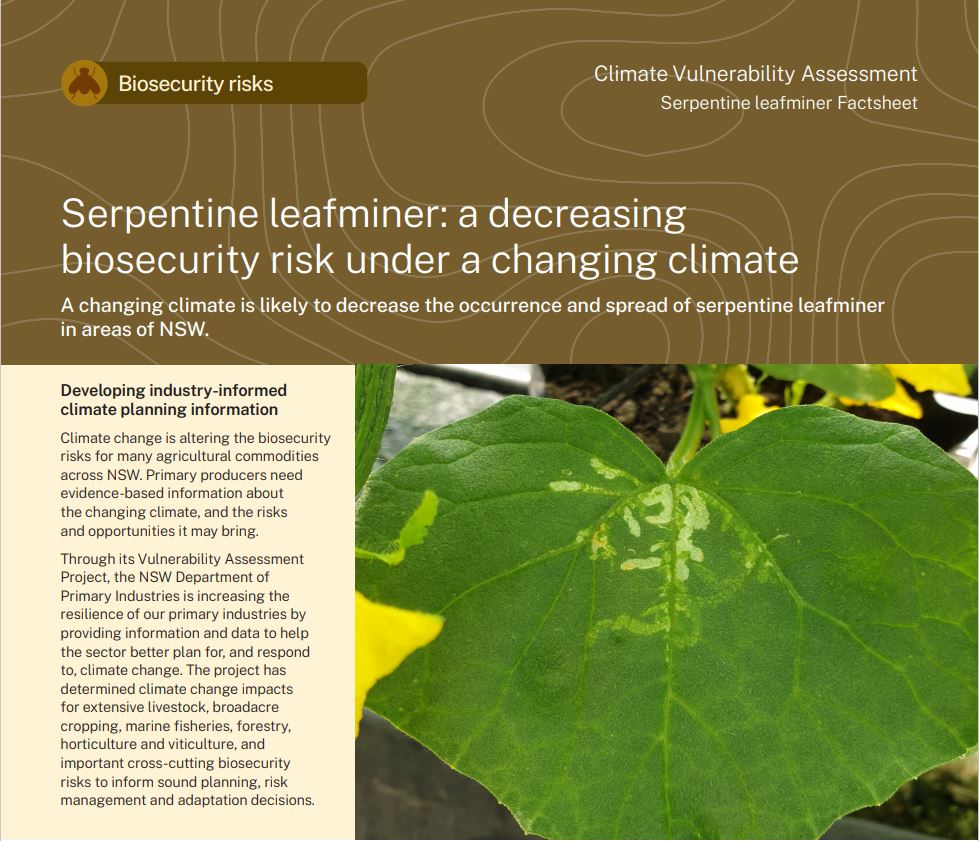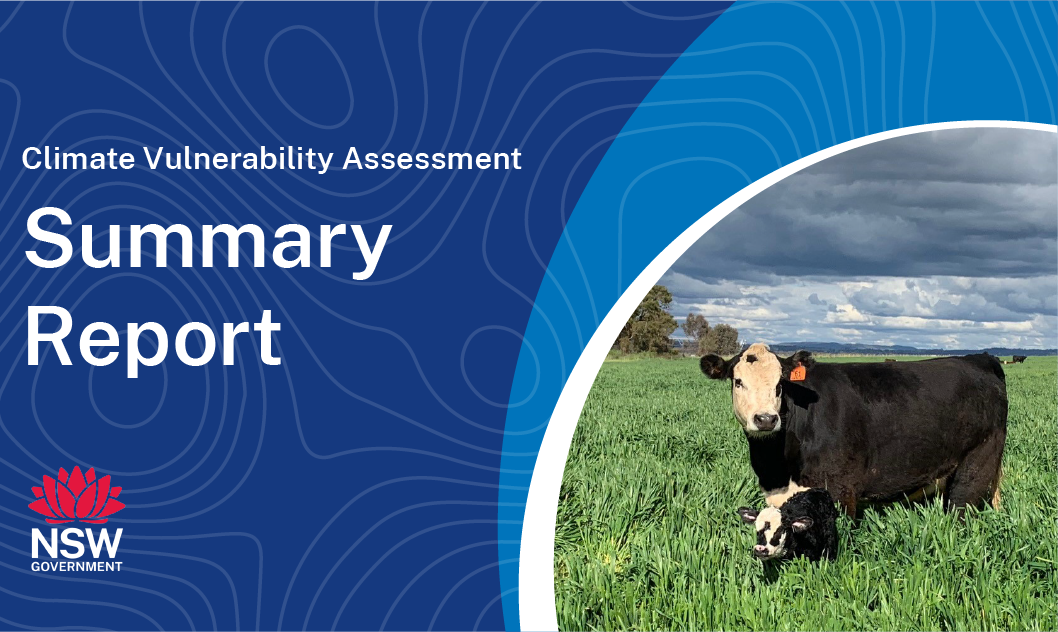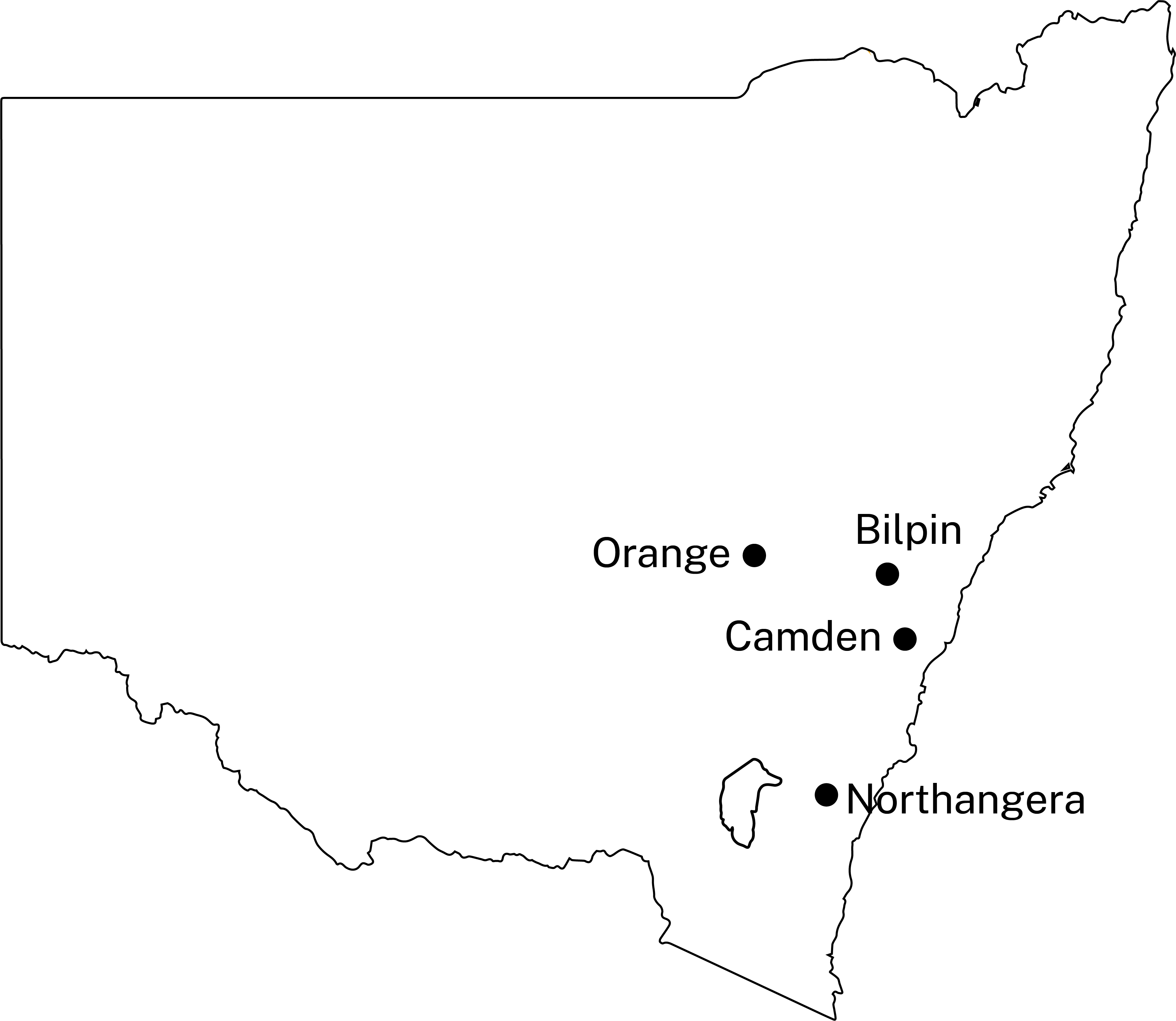What is the NSW DPIRD Climate Vulnerability Assessment? ⏷
Climate change is altering the biosecurity risks for many agricultural commodities across NSW. Primary producers need evidence-based information about the changing climate, and the risks and opportunities it may bring.
The NSW DPIRD Climate Vulnerability Assessments are enhancing the resilience of our primary industries by providing information and data to help the sector better plan for, and respond to, climate change. They have assessed climate change impacts for extensive livestock, broadacre and irrigated cropping, marine fisheries, forestry, horticulture and viticulture, and important biosecurity risks associated with these industries to inform sound planning, risk management and adaptation decisions.
How we assessed climate suitability ⏷
Climate projections were sourced from Climate Change in Australia’s ‘Application Ready Data’. This dataset is comprised of projections from an ensemble of 8 global climate models, each presenting a plausible future climate. Low confidence in the projected changes due to differences between the models is noted in the text. Care should be taken when interpreting these results.
The Climate Vulnerability Assessment is intended to highlight potential industry- or regional-level changes. Intermediate and high emissions scenarios were used in the assessments (RCP4.5 and RCP8.5), but these are not the only future scenarios possible. The inclusion of climate variables important to the commodities production was based on published research, expert knowledge and data quality and availability.
Climate suitability was assessed on a monthly timescale, with the reported climate suitability representing the average for a given month over all years in the dataset. This reflects the pattern of life stages for serpentine leafminer and the need to determine which months are likely to pose the greatest risk to host commodities.
Learn more in the Climate Vulnerability Assessment Project Framework.
Climate impacts: expected challenges for primary industries
Changes in climate suitability are likely across all key life stages of serpentine leafminer by 2050, under both emission scenarios.
Changes to overall monthly climate suitability affect serpentine leafminer in NSW in different ways:
- October to March – there are likely to be minimal to moderate decreases in climate suitability across the east of NSW and the Great Dividing Range. The decrease is likely to be greatest under the high emissions scenario (moderate to high confidence).
- April, September and October – there are likely to be minimal to moderate decreases in climate suitability at across the west of NSW. The decrease is likely to be greatest under the high emissions scenario (moderate to high confidence).
- May – Climate suitability across the state is expected to remain similar to what has been historically experienced under both emissions scenarios (moderate to high confidence).
- June to August – there are likely to be minimal increases in climate suitability at along the east coast of NSW. The increase is likely to be greatest under the high emissions scenario (high confidence).
The effects of serpentine leafminer on horticultural industries in NSW will depend on:
- the future distribution of those industries,
- changes in production timings, and
- the overlap between vulnerable life stages of commodities and the lifecycle of serpentine leafminer.
The impact of serpentine leafminer on vegetable production, in particular, could be significant in areas of moderate to high climate suitability. This is exemplified within the Sydney Basin, the point of incursion for this pest, where detrimental impacts to marketable yield are already being experienced.
Along the eastern seaboard, a combination of suitable climate and susceptible host crops, may permit either permanent or sporadic populations of serpentine leafminer to persist. Spread of the pest further west than the Great Dividing Range may be limited during warmer months, as the climate suitability for all life stages is likely unsuitable due to an increase in days over 30°C. Overall, under both future emissions scenarios, the potential range of serpentine leafminer may contract towards coastal or higher-elevation areas due to a decrease in climate suitability in NSW by 2050.
Key sites along the east of NSW where serpentine leafminer has been detected are likely to experience reduced climate suitability due to increased temperatures in the summer months.
Current strategies to manage the disease are likely to remain effective. Negative change in climate suitability through much of the year may negatively impact year-round survival of serpentine leafminer in the Sydney, Hunter, north-west and western areas of the state. This may result in serpentine leafminer becoming an episodic pest, rather than a year-round problem, in some regions. Overall, high temperatures may be a key limiting factor for serpentine leafminer. In areas where a negative change in climate suitability has been identified, the future spread, survival and establishment of serpentine leafminer may be halted or at least limited.
Where can I find the climate suitability maps?
Maps of historical and future climate suitability for commodities were produced to demonstrate where in the state a commodity is likely to thrive or else be limited by future climatic conditions. The maps are not provided on these webpages but can be found in the Climate Vulnerability Assessment Summary Report (PDF, 41425.92 KB).
Serpentine leafminer Factsheet
(PDF, 381.81 KB)

Summary Report
(PDF, 41425.92 KB)

